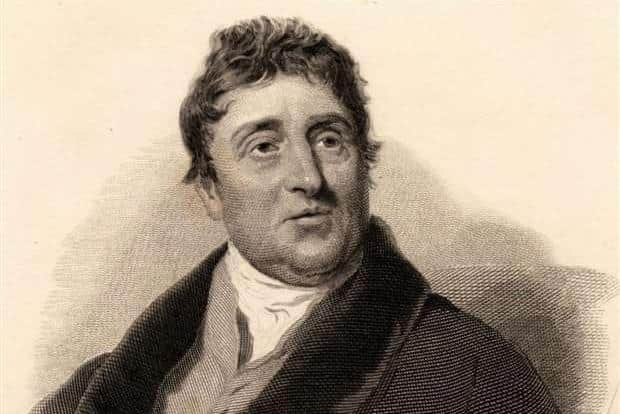Luton History: The mysterious poet behind Telford Way footbridge
and live on Freeview channel 276
The three-way pedestrian footbridge above Telford Way may not be Luton’s most loved landmark, but it too has its stories.
The Telford Way footbridge is named after its architect, Scottish civil engineer Thomas Telford. During a long career, Telford built 40 bridges in Shropshire alone, including major crossings of the Severn, and the Menai suspension bridge linking Anglesey and Wales. He was such a prolific road and bridge builder that he was known during his life as the ‘Colossus of Roads’. He was the founding president of the Institute for Civil Engineers.
Advertisement
Hide AdAdvertisement
Hide AdThomas Telford was born 1757 in Glendinning, Scotland, the son of a widowed crofter. John, his father, died when Thomas was born. Mother and son lived in poverty in a two roomed cottage, however as Thomas grew older his uncle noticed his talent for poetry and drawing. He paid for Thomas’s apprenticeship as a stonemason, and this was his gateway to success. Thomas never looked back.


In 1800 he moved to London and continued several successful projects, including working on renovations to London Bridge and Somerset House.
Alongside engineering, Thomas continued writing poetry with some success, and was particularly inspired by Robert Burns. His literary talents brought access to a social circle and certain exclusive clubs in London, where he made some close friendships. Thomas never married and apparently had little interest in wealth. His will left large gifts to two friends, Robert Southy and Thomas Campbell, both poets.
Thomas died in 1834 and is buried in Westminster Abbey. He left his wealth and architectural designs to institutes, libraries and engineering schemes for future growth. He never forgot his roots; even the small church where he was baptised in Glendinning benefited from his vast estate.
Advertisement
Hide AdAdvertisement
Hide AdReturning to Luton’s own ‘Telford Bridge’, I must admit my sorrow that a beautiful building, the Fox public house, built in 1927, was sacrificed for improvements. The Fox Inn built in 1795 stood proudly on Dunstable Road and held a popular annual event called the Fox Fair, “noted for its buns, called Wigs, it is esteemed a pleasant country walk on a Sunday to visit for refreshments.”


The Fox Inn was on numerous occasions the destination for inquests. One in particular followed the sad demise of Thomas Wright, found hanging in Daffy Wood in 1860. Doctor Woakes who treated him at the time said he was in recovery from depression; the verdict was ‘self destruction’. The Wright family had an unlucky history of suicides, as did the Fox Inn itself. One landlord, John Ireland, died in a lunatic asylum in 1871, while his replacement William Gibb was declared bankrupt in early the early 1870s and committed suicide by slashing his throat with a razor in 1873.
There are plenty more secrets to unearth from this quaint and cosy inn, including a further unsolved murder in the Wright family, so watch this space!
Telford Way footbridge features as a story stop in Museum of Stories: Bury Park, with a more contemporary memory from the 1980s.
But next time you amble across this bridge, spare a thought for the ghostly turmoil that lays beneath…
Hear more stories about Luton’s past via the free app, Museum of Stories: Bury Park